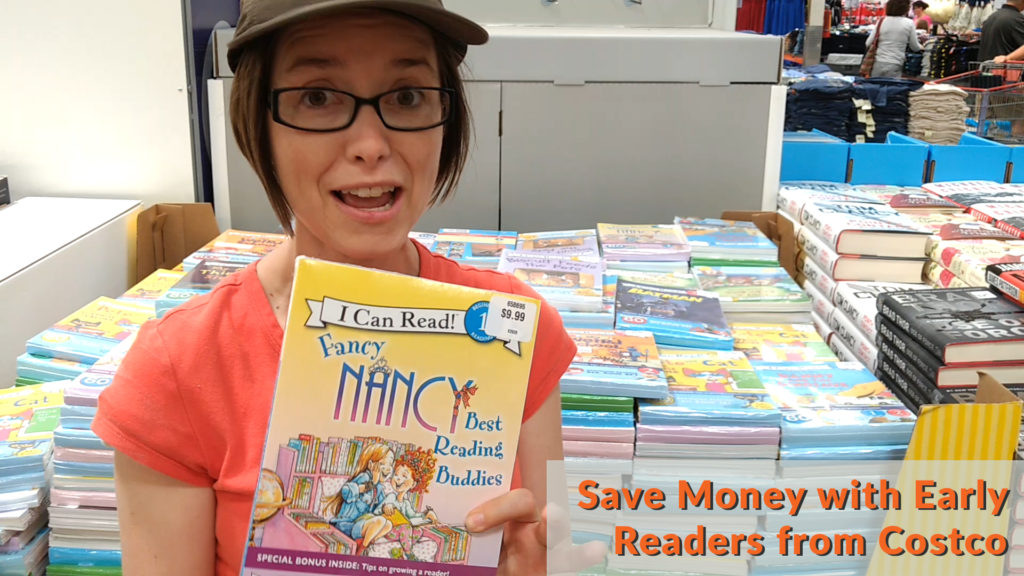
Are you free?
As in … are you free to occasionally do something just for you?
Free time can sometimes feel like a mirage for busy homeschool moms. There’s just soooo much that you have to do (even in the summer!).
But making sure you get free time as a mom is super duper important!
In fact, I would be willing to bet that any homeschool mom who makes it more than two or three years homeschooling without burning out has figured out how to fit free time into her day.
Without free time, you’ll find that your stress is higher, your tolerance is lower, and your patience is non-existent.
As your planning your school year, please …. PLEASE … plan some time in for yourself! If that means you do one less project, read one less book, or do one less fieldtrip, that’s okay!
The difference it makes in your home will more than make up for whatever you leave out!
This past week, I took a chunk of free time (5 days!) and celebrated my 20th wedding anniversary with my awesome hubbie, Josh.
During our trip to Costco (because that’s TOTALLY part of what you do when you’ve been married for 20 years and have free time!), I saw my FAVORITE early readers.
Of course, I had to stop and make a video for all of you!
In this video, I talk about how I used these readers to help my beginning readers, and I share some of the ones that we’ve loved.
(I also make it tougher on the Costco employees part way through the video … can you catch what happened?!?)
Free time and early readers … pretty awesome!
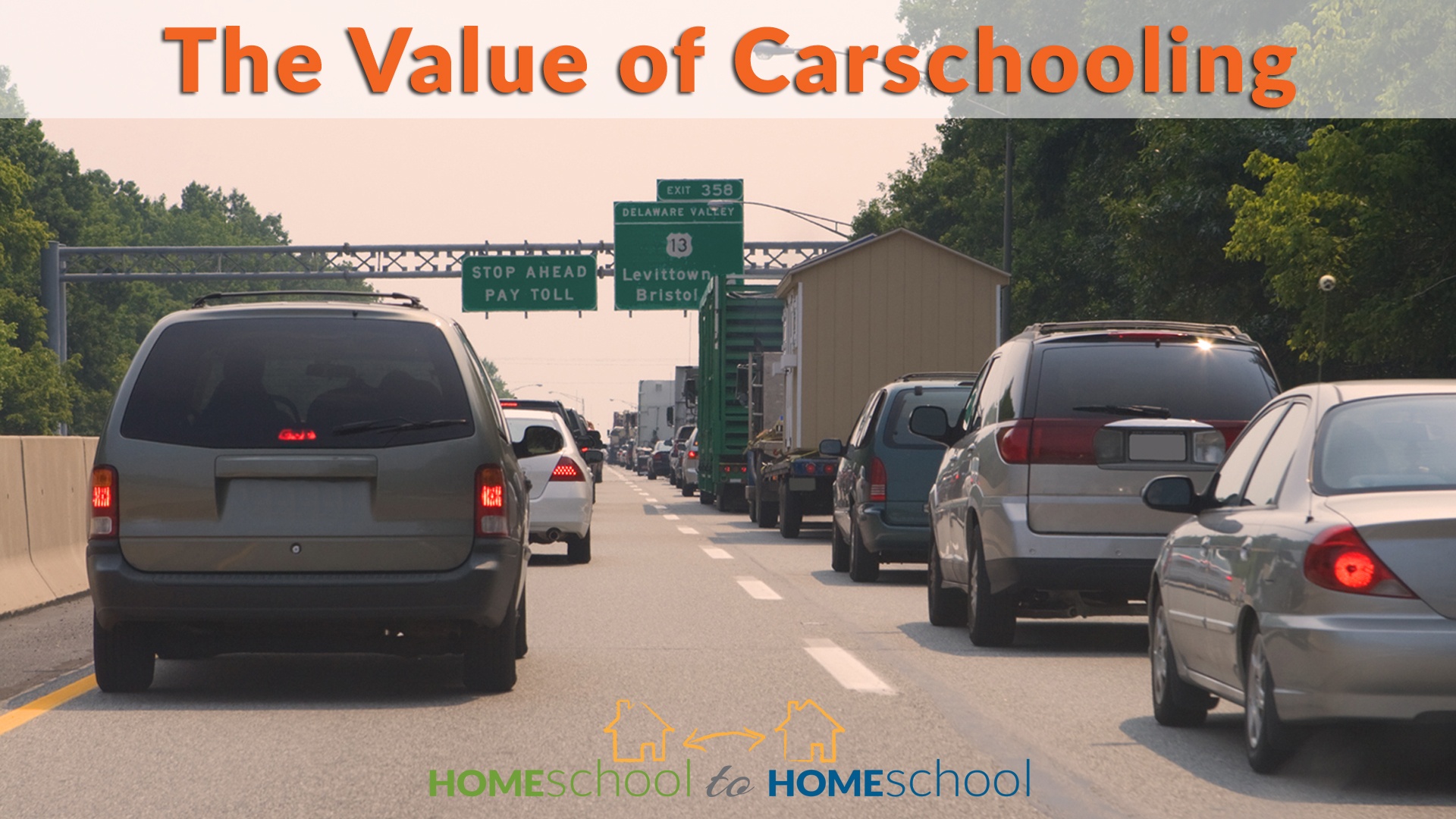
How much time do you spend in the car?
Between lessons and co-ops and errands, I have spent HOURS and HOURS in the car over my homeschooling lifetime.
Fortunately, I learned that my time in the car could be put to good use. And make the trip more enjoyable at the same time.
Carschooling is a term a lot of homeschoolers use to describe when you do homeschool in the car.
While there are homeschoolers who do carschooling exclusively (especially those who travel), most carschooling happens in conjunction with other kinds of homeschooling.
Listening is one of the easiest things to do … and we’ve done A LOT of listening over the years.
History, science, audio books, classical music, storytelling … in the car, ears are open and minds are free.
I love carschooling because it fits with my theory that when kids are younger, they are absorbing information like sponges. In the car I have a captive audience that I can feed a healthy diet of all kinds of learning.
And the awesome thing is I get to learn along with them … while also getting everyone where they need to go.
Awesome!

Ever feel frustrated because your kid doesn’t want to write?
Or do you wish you could simplify your language arts curriculum, save yourself some time, AND still produce great writers?
It’s totally possible to inspire a love of writing AND do it in less time and effort.
Because writing breaks down into THREE essential elements. And you can practice each element individually and to different degrees depending on what your child needs help with and what they are naturally good at.
What are these three essential elements that must be mastered in order to be a great writer?
Putting words on paper (or on a computer screen)
Spelling
Getting content out of the brain in a coherent manner
Often, as moms, we try to lump all three of these skills together.
“Write down your ideas.”
“Let’s do a book report.”
But if your kid’s development in these three skills isn’t the same, they will struggle and get frustrated.
(For example, if they are FABULOUS at TELLING you a story, but they struggle to write the story down on paper!)
Being aware of each of these essential skills, and then tackling them individually, can sometimes be an excellent way to still develop great writers without all of the resistance.
Let’s break each of these skills down.
Putting Words on Paper
This is traditionally called “handwriting” and “typing.” The goal is for your kid to be able to legibly produce letters in some way.
For some kids, this comes so naturally. “Look mom! I just wrote the alphabet!”
They go from letters to printing sentences to cursive … and often they practice on their own because they love it. (It’s true … I had one, so I know it’s possible!)
However, there are other kids who putting pen to paper is HARD! Whether they struggle with some form of dysgraphia or they genuinely are just not interested, they have no interest in “practicing” how to write.
For these kids, breaking down the process of handwriting can be very very helpful. And practicing this skill IN ISOLATION makes it easier for them to learn what they need to learn.
My favorite resource for learning handwriting is Handwriting without Tears. We’ve been using this program with great success with my youngest this year!
Typing is also a valuable skill that you can teach young. We’ve used two different programs over the years.
Typing Instructor is a game that you install on your computer.
If your kid is a little older and you like FREE (who doesn’t?) and don’t mind a few ads, we’ve had great success with the online instruction of Typing Club this year.
Spelling
If your kid can’t spell, they can’t communicate in writing very well.
I’ve learned over the years, it can be valuable to split spelling from content creation and handwriting. If your kid is struggling, isolating spelling allows them to focus on what they need help with without feeling the pressure to also produce something amazing.
My two favorite spelling curricula are:
Sequential Spelling (for my holistic, right-brained learners)
All about Spelling (for my logical, left-brained learners)
Content Creation
The last essential part of becoming a great writer is sharing great content.
Great content can be anything from an interesting story to a factual report to a summary of what your kid learned during the day.
Later in your kid’s schooling, writing will be how they organize and share their thoughts about what they are reading and learning. It’s one of the main ways others will assess how much they’ve understood and synthesized from a class.
I have found one of the ideal ways to prepare my kids to share great content is to encourage them to share their thoughts in an organized way as much as possible.
When kids are younger, one of the best ways to do this is through storytelling. Storytelling requires that a child structure their ideas (beginning, middle, and end) — AND emotionally connect with their ideas.
PLUS storytelling is FUN! So it’s much easier to get kids to practice when they are engaging in a storytelling game.
While there are many resources out there to help with storytelling, two of my favorites (because they are simple and easy) are:
Rory Story Cubes (See my previous review here.)
Tell Tale (see my video review below)
Handwriting, Spelling, Content Sharing — three essential skills.
As your kid works on writing, keeping each of these skills in mind will help you identify where the gaps or struggles are. You can focus on those … while still moving your kid’s ability to write forward.
If you want to check it out Tell Tale for your homeschool, CLICK here
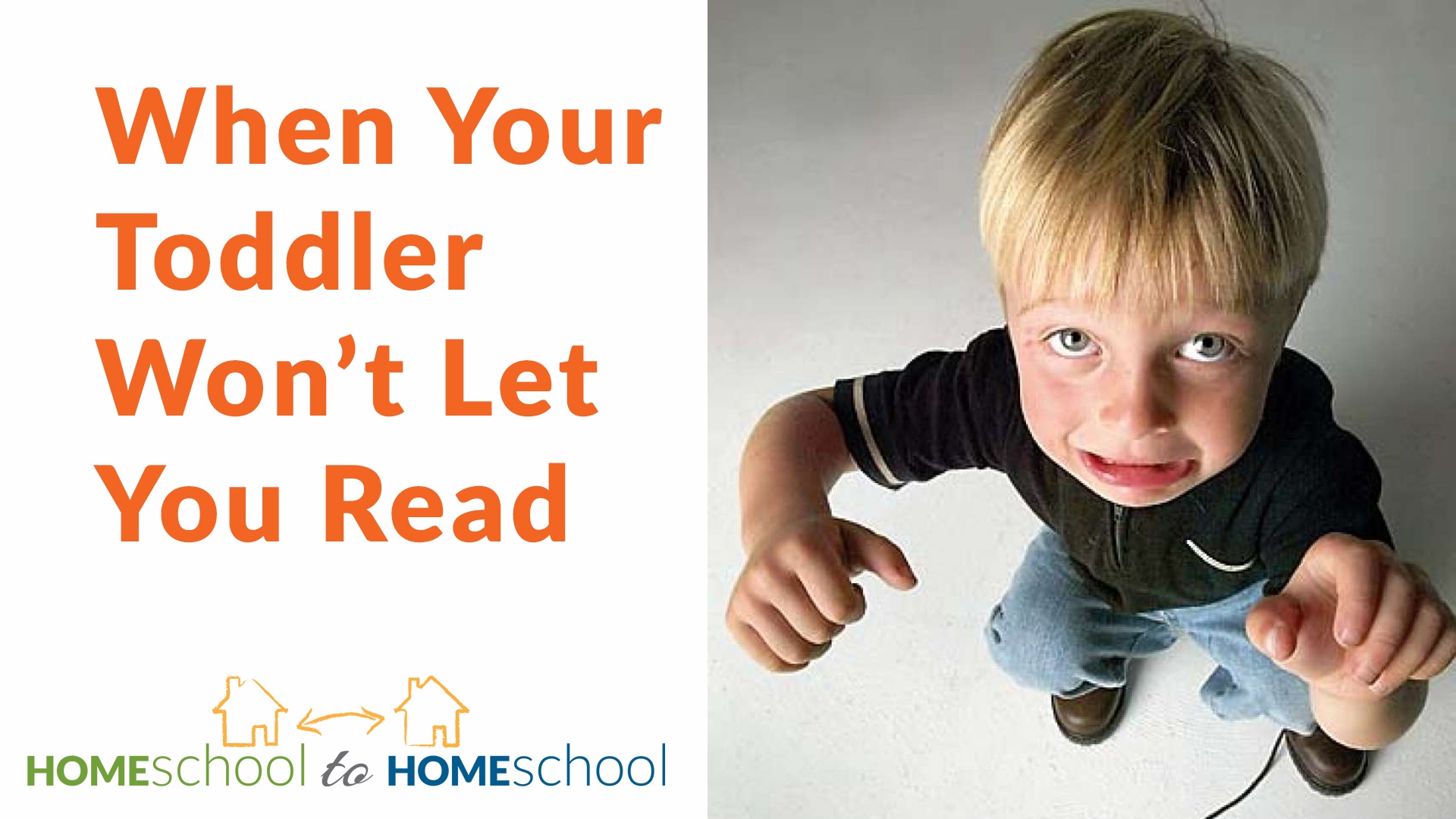
Question: What do you do when your toddler won’t let you read with your older kids?
Answer: This used to happen to us ALL THE TIME!
My youngest was such a stinker. We would be sitting on the couch trying to read. He would run over and pull at the book … scream loudly … or even spit on us as we tried to read.
It was soooo frustrating!
First I tried distracting him with toys. I also would consistently ask him to stop. But nothing worked.
So my solution was finally to firmly but kindly take him to his crib during reading time.
Each time I would explain that if he couldn’t join us respectfully then he wouldn’t get to join us at all. It took about 6 months, but he finally outgrew that phase.
(Did you read that?!? … SIX MONTHS! … People — parenting and homeschool is NOT for the faint of heart. Sometimes it takes TONS of patience and love for some children to learn certain skills.)
Of course, I want to really reinforce that I was careful to make sure he was getting time from me at other times so he also felt like he was special and important.
This wasn’t about ignoring, this was about setting boundaries and helping him learn to control his impulses. 🙂

Sometimes I play dumb with my kids.
The other day my daughter asked me if I knew what words she could use to replace “show” in a paper she was writing.
Immediately my brain started to churn out ideas — “display” “mirror” “reflect” “exemplify.”
But I caught myself before the words left my mouth … and instead I said, “I don’t know. Why don’t you look it up in the thesaurus.”
A few moments later she had found “illustrate” — a fabulous word! Plus she felt empowered to solve problems and find solutions on her own.
(Bonus: She had also practiced using a thesaurus!)
Over the years, I’ve learned that if I always give my kids the answer, they depend on me too much. Sure it feels good to be the one who knows something, but I have learned the hard way that my job isn’t to “feel good” when I’m educating my child.
My job is to teach them how to learn and how to be successful without me. Which means, I have to let go and let them figure things out on their own!
Does this mean I ALWAYS give them an “I don’t know”? Of course not!
There are also times when I can tell a child is struggling and needs my support … or has already put in hours and is exhausted … or they’re in a position where learning the skill to figure it out on their own wouldn’t be a good fit.
Then I step in and share what I know.
As with everything, it’s a constant question as to how I balance the two.
But knowing that I need to balance has made a huge shift in our homeschool. 🙂
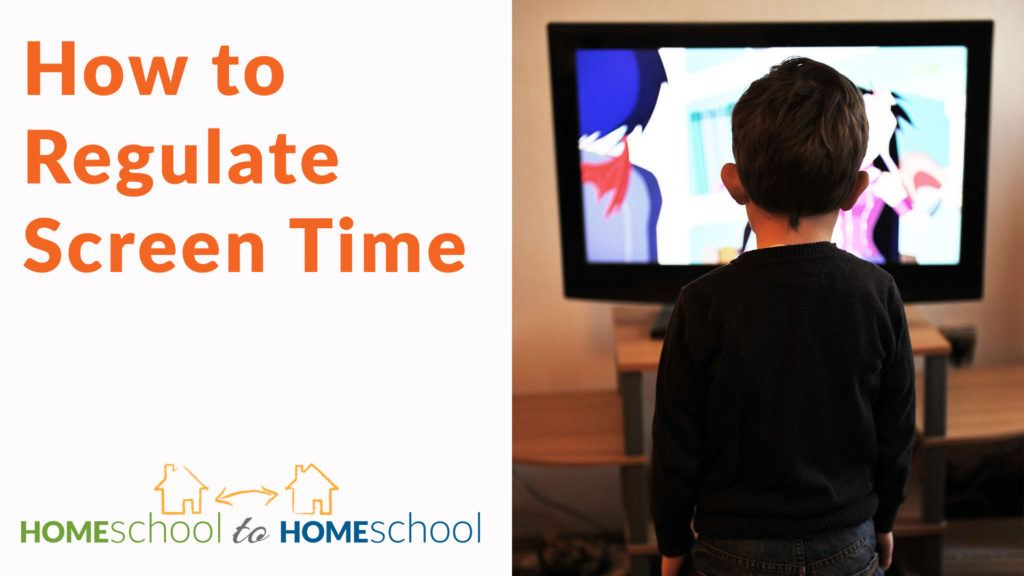
Question: How do you regulate screen time?
Answer: Ah … screen time … the big elephant in the room for every homeschool parent. To do it … to not do it … how much is too much? … what about educational stuff?
Here’s what we do:
1. Each kid has certain planned learning experiences (some look like games) that are part of the regular school. These are loosely regulated. If they want to spend more time on them, I’m okay with that up to a point. Some are VERY fun, and I have some kids that will play and play all day long. Then I have to pull the plug and tell them to go do something else with their brain.
2. We watch documentaries together as part of school. The kids will sometimes choose to watch educational shows (like Cyberchase) on their own. I usually let them watch on their own when I need the younger ones to be “babysat” while I’m gone or am otherwise occupied.
3. Non-educational screen time we call recreational watching. This is HIGHLY regulated, because I want my kids to learn that technology is a tool not a toy. We don’t play any non-educational games (and we personally have decided against Minecraft … although many homeschool families use it with success … because of it’s highly addictive nature).
4. Each day, the kids have a list of things that need to be accomplished. Most is chore related, but there is also practicing instruments, daily hygiene, and school assignments. If they finish their entire list, they are rewarded with 15 minutes of “free” screen time that they can cash in after 3 pm with permission. As long as they are watching or playing approved screen content, they can use these minutes when and how they wish.
5. When kids are sick, we use screens to help pass the time. Anything done on screens before 3 pm must be educational (documentaries, educational shows, or educational games). After 3, they can transition to non-educational shows.
6. We occasionally watch a movie as a family. This happens about once a week.

Question: How can I teach my kids the countries of the world?
Answer: I’ve done a few different things.
1. We put a big map up on the wall. My favorite is the laminated map that Costco sells every fall because it also has flags and a US map comes with it. I’ve seen other families put the map under plastic and use it as decoration on their dinner table.
2. We purchased an inexpensive globe and get it out when I want to explain relative size of countries or so the kids can better grasp how all the countries are related on the globe.
3. We LOVE the Stack the Countries app that you can get for the iPad or android. It has a fabulous amount of learning packed in, and my kids love the game elements. It also helps that every country gets cute eyes that makes the entire thing feel friendly and fun.
4. We’ve also read fairytales and folktales from around the world, using the map to figure out where the stories come from. Anytime you can incorporate stories into learning, the learning is more readily received and it tends to stick better.

I once asked my six year old to pick up some food that had fallen on the floor during dinner time.
I knew she would be squeamish—it was peas and mashed potatoes, after all—so I offered her a paper towel to protect her fingers from slimy cold food and lots of encouraging words.
 She still collapsed in a heap on the floor, and as tears began to stream down her face, she sobbed, “I can’t! I can’t!”
She still collapsed in a heap on the floor, and as tears began to stream down her face, she sobbed, “I can’t! I can’t!”
“Really?” I wanted to say. “You can’t bend down and pick up a few pieces of food off the floor? What, are your arms broken?”
Fortunately, my “time to be a good parent” sensor went off. (It happens sometimes!)
I remained calm and let her spend the next forty-five minutes working through her issues with wet food.
So why do kids say “I can’t” when you know that they can?
You know they can because you saw them do it yesterday … or they did something much harder last week … or you saw their sibling who is six years younger do it earlier that same day.
I believe sometimes my kids know that they can, too, and they say “I can’t” just to avoid doing something unpleasant.
But I also believe that there are many times when my kids don’t believe that they can because they don’t feel competent.
Emotional Competence
Competence is one of the basic human needs. It means that you feel like you can accomplish something, or that you can be successful at what you attempt.
But competence is much more than just what you are capable of physically. In order to feel motivated to do something, you also have to feel emotionally competent.
Being a kid is hard. And being a kid is harder for some kids than it is for others.
What “Can’t” Sometimes Means
 I have one son who struggles to complete simple tasks–such as brushing his teeth–if he is tired or hungry or receiving too many instructions at once.
I have one son who struggles to complete simple tasks–such as brushing his teeth–if he is tired or hungry or receiving too many instructions at once.
He will start to cry, get angry, and yell that “he can’t do it.”
Now I know that he can physically brush his teeth. He does it all the time.
But in the moment, emotional or mental or unrelated physical issues cloud his ability and remove his competence.
One of my daughters has spent years learning to play the violin. Again and again, when she hit something new and difficult, her initial reaction was to throw herself into her chair and proclaim, “I can’t do it!”
This usually happened after she had tried and failed to be perfect the first time.
It took years to learn for both of us to learn that “I can’t” almost always meant she was one or two tries away from getting it right. But in the moment, she really did feel like it was hopeless.
She didn’t feel competent and didn’t want to keep going—even if she was only moments away from success.
Every Kid Is Different
Some kids come to this Earth naturally feeling more competent than others. They trust themselves and are willing to give new things a try. They aren’t easily overwhelmed. They problem solve new situations, seeing them as an exciting challenge.
Other kids struggle breaking tasks down into manageable steps—they get easily overwhelmed. They look at something new with a lot of fear and trepidation. They don’t like to take risks—and they don’t want to fail.
These kids require a lot of additional patience and love.
They need us, as parents, to help them feel like they can be competent. We have to provide a safe environment for them to practice failing so that they can succeed.
We have to help them break down tasks and walk them through those tasks step by step. We have to be calm and collected as they work through intense emotions that come with not feeling capable and competent at a job that they have to do.
Step Back and Ask
Do you have someone who says “I can’t” a lot? Do you want to throw your hands in the air and yell, “Yes, you can!”?
Next time you have one of those moments, step back and try to figure out why they don’t feel competent.
Is there something more going on? Could you sympathize more? Break down the steps? Encourage them to not be afraid to make mistakes?
Rarely, are there easy answers. But how you respond will either take them closer to feeling more competent or drive them farther away.
As you find the root causes of the “I can’t” and address them, you’ll start to hear more “I CAN!”
And that’s a beautiful sound to hear.
Your turn …
Do you have a kid who says “I can’t” all the time? Share your story below and what you’ve found helps.

It happens to the best of us. One moment, you think everything is fine. The next … tears … defiance … refusal.
Your kid does NOT want to do their school work.
Their eyes lock with yours, and you realize that this is a battle that you’re not sure you can win. You start to feel your jaw tighten or your shoulders sag.
Is it worth the fight?
You may consider begging and pleading … OR … consequences and forcing.
BUT there is an alternative!
Stop and ask yourself the following questions …
Do my kids feel forced?

Motivation comes when a kid feels like they have a say in what they are learning.
And sometimes as homeschool moms, in our effort to make sure we get “all the subjects” in, we inadvertently turn our homes into a dictatorship.
Do this! Do that! Finish your math! Don’t forget your spelling!
Your kids can end up feeling like they are cogs in a machine … grinding away at one subject and then another.
And that’s a recipe to kill motivation.
Instead, make sure your kids are involved in the learning decisions. Ask for their input.
Which curriculum? Which game? Which book? Which movie? Or … do you want to do something else?
Do they want to cook instead? Or maybe build a fort out of couch cushions? What about a puppet show with stuffed animals?
If you expand your vision of what “school” can look like, you’ll find that you’re kids often are doing amazing learning all on their own … and you didn’t even realize it.
Do my kids feel misunderstood or disconnected?
 Learning happens AFTER a relationship is in a good place.
Learning happens AFTER a relationship is in a good place.
Remember your favorite teacher from school? The one that inspired you and made you want to do a little better?
Did you also feel like that teacher liked you and that you had a good relationship?
Your kids need that too!
They need to feel loved and supported and connected to you. And sometimes that can be hard if your relationship is in a rocky place (believe me … if it hasn’t happened yet, it will!)
When the relationship starts to go south … or if it’s already there … don’t be afraid to pull the plug on school for a while and focus on building up the relationship.
Spend time together that ISN’T related to school or has any requirements. Play a game. Go for a walk or a drive. Do something your KID wants to do (and try and be super interested!)
As your relationship improves, they will naturally be more inclined to listen and learn from you.
Is the work too easy or too hard?
 Your kids want to be challenged, but not too much!
Your kids want to be challenged, but not too much!
If the work you are assigning is too easy, they’ll get bored and moan and complain.
If the work is too hard, they’ll get overwhelmed and cry.
And remember – what YOU think is too easy or too hard may not match what your kid thinks. This is the point where it’s not about “right” or “wrong” but about perception.
If they PERCEIVE it to be too hard or too easy, it is.
Since perception creates emotions … it’s the emotions that really get in the way of good learning. Negative emotions literally shut the brain off.
So step back and try to see the request from the eyes of your kid. Ask them (not in the moment … later) if they were feeling overwhelmed or bored. Make sure it’s a safe place for them to answer honestly.
Then adjust based on what they tell you. Offer more support. Take a break from the assignments. Skip the easy parts.
Tailor the learning experience to create “goldilocks” learning … just right!
Are my kids burned out?
 Some kids get involved in too many things because they want to do everything.
Some kids get involved in too many things because they want to do everything.
Some homeschool moms involve their kids in too many things because they want their kids to try everything.
There is soooo many things you and your kids can do … every day of the week there is some kind of activity or fieldtrip or co-op class.
And that’s on top of the history projects and prepping for the science fair and studying for the spelling bee and the nature studies and the journaling and the literature and the hands-on math activity.
Whoa!
When does your kid get to just play?
Burn out looks different for every kid, but when it hits, you’ll know. The light will go out. The excitement will die.
And even the things they USED to enjoy doing, they won’t want to do anymore.
Give yourself permission to skip things. Don’t sign up for every fieldtrip and every activity—even if it’s a good price or it sounds like it will be “educational.”
Do just enough to feel good about school.
And build boundaries around your kid’s time so that there’s plenty of unstructured, “do whatever you want” time.
Play is how kids relax and unwind. So give them plenty of time to relax every day.
Are my kids distracted?
 The world today is FULL of distractions.
The world today is FULL of distractions.
Screens of all shapes and sizes, toys that beep and wiggle, books full of fluffy nothing.
A distracted kid is a numb kid. Their brain gets super lazy and is less able to learn anything.
They get used to the world coming to them and doing all the thinking work. And when the world does all the work, they get lazy and aren’t interested when real learning has to take place.
So fight back against the distractions.
Get rid of the toys that do all the work. Limit the amount of time on passive screen time. Send the fluffy books to the thrift store.
Surround your kids with things that expect something from them in return. Their brains will start to turn back on and they will be more engaged in learning.
Now it’s your turn …
What questions do YOU think you should consider when your kids aren’t motivated to learn?
Share you thoughts below. I’d love to hear what you have to say.
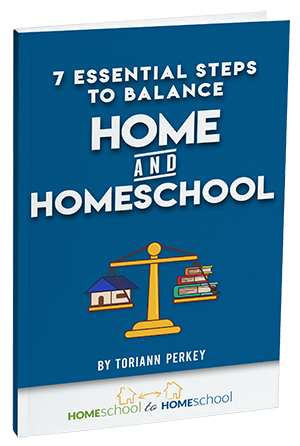









 She still collapsed in a heap on the floor, and as tears began to stream down her face, she sobbed, “I can’t! I can’t!”
She still collapsed in a heap on the floor, and as tears began to stream down her face, she sobbed, “I can’t! I can’t!” I have one son who s
I have one son who s

 Learning happens AFTER a relationship is in a good place.
Learning happens AFTER a relationship is in a good place. Your kids want to be challenged, but not too much!
Your kids want to be challenged, but not too much! Some kids get involved in too many things because they want to do everything.
Some kids get involved in too many things because they want to do everything. The world today is FULL of distractions.
The world today is FULL of distractions.